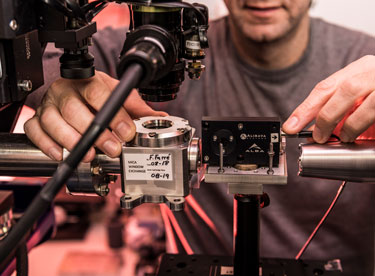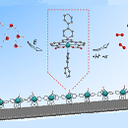
A new oligomeric, hybrid molecular material behaves as a rugged and powerful molecular electro-anode for the water oxidation reaction achieving unprecedented current densities in the whole range of pH, but especially at neutral pH. The catalyst is adsorbed to the graphitic surface via a novel aromatic C-H-π interactions – an anchoring strategy that has never been described for molecular catalysts up to now and that can be extended to other catalytic reactions. The study, led by researchers from the Institute of Chemical Research of Catalonia with the collaboration of NCD-SWEET beamline scientists, has been published in Nature Chemistry.
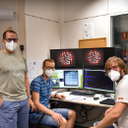
A research team from Centro de Investigaciones Biológicas Margarita Salas (CIB-CSIC) uses synchrotron light to study the possible effect of an antitumoral drug of clinical use over the viral cycle of SARS-CoV-2 coronavirus. The drug might interrupt the viral transport inside the cell, blocking its replication. The experiment was performed at the NCD-SWEET beamline of the ALBA Synchrotron.
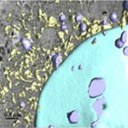
A study led by researchers at Institut d'Investigació i Innovació Parc Taulí in Sabadell (Barcelona), in close collaboration with the ALBA Synchrotron, has demonstrated that the use of tricine as an adjuvant for cisplatin chemotherapy enhances drug effectiveness against cutaneous squamous cell carcinoma. This study published in PLOS ONE assesses the effectiveness of several treatments by looking at the changes in the internal structures of the cells using the MISTRAL beamline of ALBA.
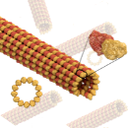
Researchers have found that addition of paclitaxel (a type of antitumoral drug) to microtubules alters their structure. This compound modulates the material properties of microtubules by converting destabilized growing microtubule ends into regions resistant to depolymerisation, eventually leading to cell death. Results were obtained at the NCD beamline of the ALBA Synchrotron.
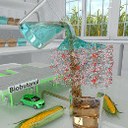
Researchers from the ICMAB-CSIC have discovered a MOF that allows for the separation of butanol from acetone-butanol-ethanol mixtures that are extracted from the fermentation process of biomass feedstock, as part of the standard industrial process to produce biofuels. This new compound, mCB-MOF-1, shows promising results compared to other methodologies or other MOF materials. Data obtained at both ALBA beamlines, XALOC and NCD-SWEET, had a key role in this study, as well as their scientists support and collaboration.
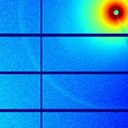
A research team has studied the efficacy of new CHO/PA polymeric nanoparticles for the sustained delivery of a drug used in breast cancer therapy. Some of the experiments have been carried out in the NCD-SWEET beamline at ALBA.

Perovskites materials are promising candidates for next generation solar cells. However, their use is still limited by their instability within ambient conditions. Instead of absorbing all visible light and appearing black, some of these super materials preferentially form another structure which is yellow. Since only the black form is optically active, the current challenge is achieving stable black perovskites thin films suitable for real world optoelectronic devices. An international team of scientists, led by a group from KU Leuven in Belgium, have shone a light on this problem developing a new method to stabilize the black form introducing strain into the perovskite thin film using the glass substrate on which it sits. Synchrotron-based techniques at the ALBA Synchrotron and the European Synchrotron Radiation Facility were crucial for obtaining these results, published today in Science.

Using synchrotron light, BASF chemical company together with scientists from the Universitat Politècnica de Catalunya (UPC) and the ALBA Synchrotron have determined how clays and superplasticizers interact in cement pastes. These results pave the way for improving the design of new superplasticizers more resilient to the clays that usually accompany the sands used in concretes as aggregates.

A research group from the Institute of Agrochemistry and Food Technology (IATA-CSIC) in Valencia is using scattering techniques at the ALBA Synchrotron to develop new packaging systems made of biopolymers, an environmentally friendly solution for the food industry.
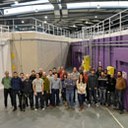
The NCD beamline, now NCD-SWEET, devoted to Small Angle and Wide Angle X-ray Scattering (SAXS, WAXS), is offering users further experimental possibilities and higher quality data.


